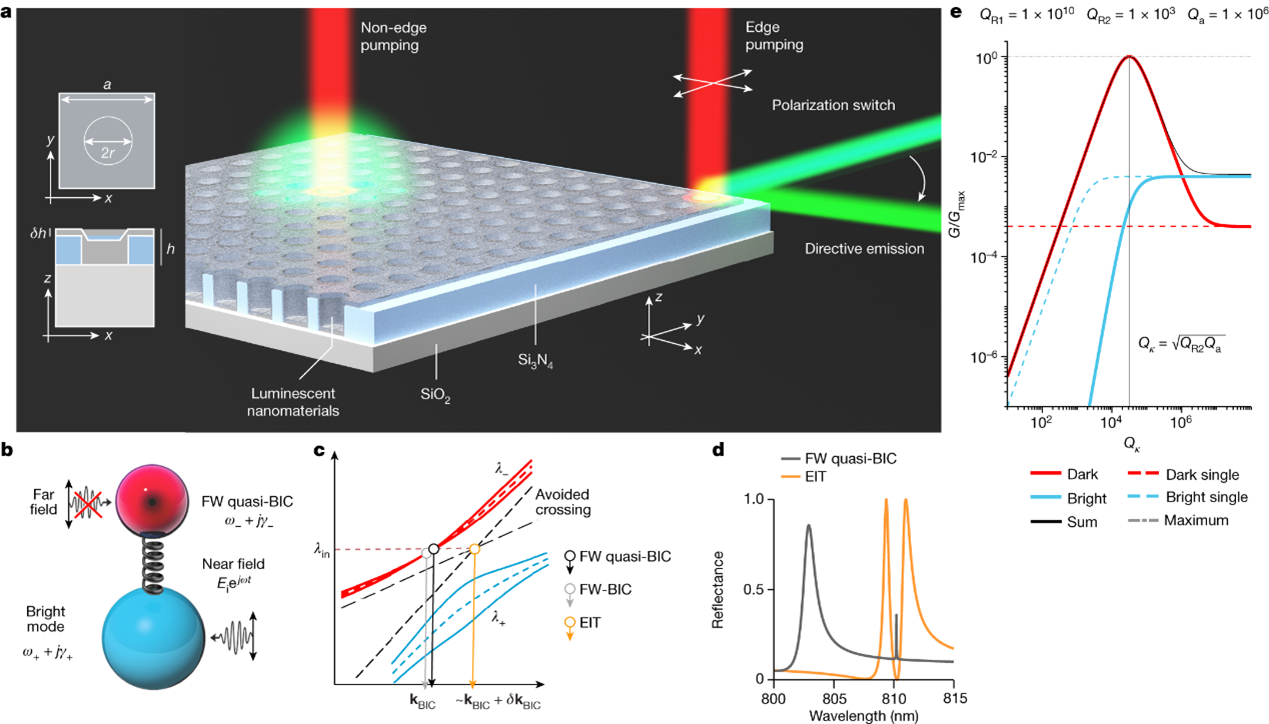Manipulating light at nanoscale for increased photon upconversion
Photon upconversion, the process of converting low-energy photons into higher-energy ones, is a crucial technique with broad applications. However, the quest for efficient photon upconversion remains challenging due to inherent limitations in the irradiance of lanthanide-doped nanoparticles and the critical coupling conditions of optical resonances.
upconversion luminescence by eight orders of magnitude. This enhancement also enables the directed propagation of self-collimated photons with exceptional precision.
Prof Liu said, "This breakthrough is not only a fundamental discovery, but represents a paradigm shift in the field of nanophotonics, altering our understanding of light manipulation at the nanoscale. The implications of supercritical coupling extend beyond photon upconversion and offer potential advances in quantum photonics and various systems based on coupled resonators."

A research team led by Professor Liu Xiaogang, in collaboration with Dr Gianluigi Zito from the National Research Council of Italy, have discovered an unusual optical phenomenon called "supercritical coupling" that increases photon upconversion efficiency by several orders of magnitude. This discovery opens up new avenues to manipulate light and could advance developments in quantum technology such as quantum computing, super-resolution imaging, and photonic devices such as lasers, optical cavities and resonators.
upconversion luminescence by eight orders of magnitude. This enhancement also enables the directed propagation of self-collimated photons with exceptional precision.
Prof Liu said, "This breakthrough is not only a fundamental discovery, but represents a paradigm shift in the field of nanophotonics, altering our understanding of light manipulation at the nanoscale. The implications of supercritical coupling extend beyond photon upconversion and offer potential advances in quantum photonics and various systems based on coupled resonators."




